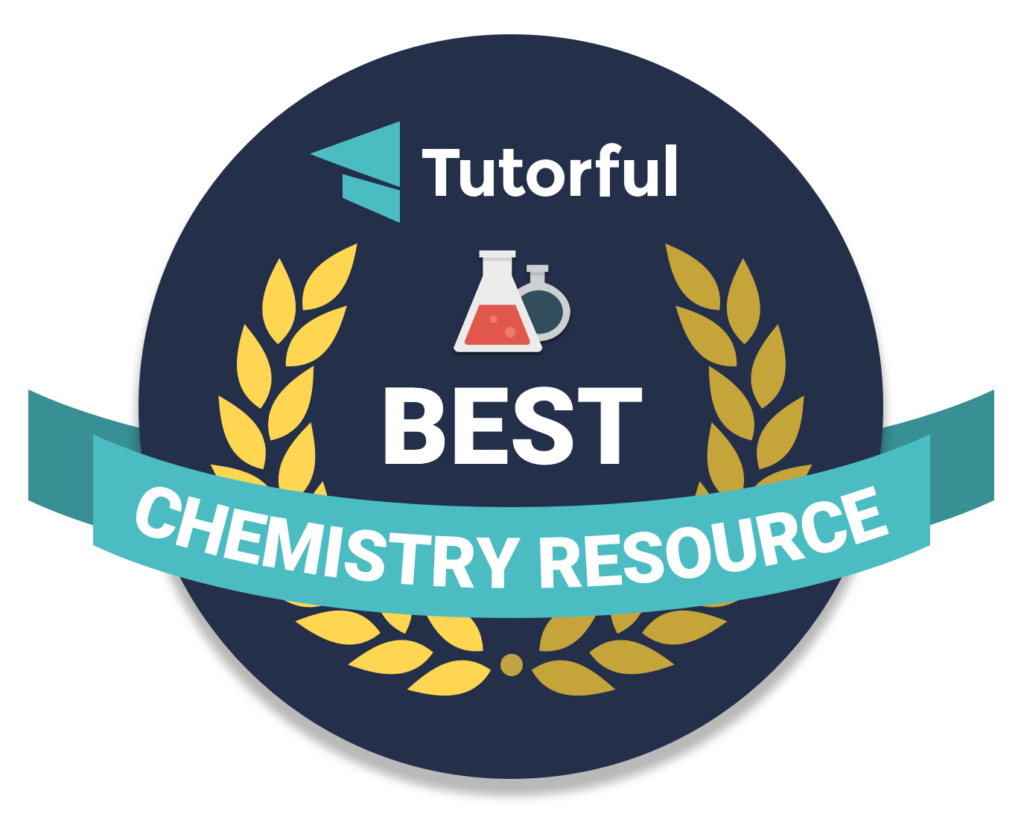 by Robert O. Grover
by Robert O. Grover
One of the great challenges we face as educators each and every time we work with students is engagement. What will it take to get a student interested in the topic at hand, whether it is computer science, social studies, math, science? We all share the same challenge: get them interested!
One of the best ways to engage students in science and STEM is “the Data Game.” It’s a simple gamification concept and framework that can be applied in a variety of ways with databot. You essentially make a fun and challenging game out of acquiring, visualizing, or analyzing data.
We recently put this concept into practice at the California Science Teachers Association (CSTA) conference in San Jose. Working with science teachers to introduce them to databot was awesome! The incentive was a free databot kit for whoever came out on top in this challenge.

The Challenge
Using all your scientific skills, deliver the highest possible CO2 concentration to databot’s on board air quality CO2 sensor. You will have one attempt to deliver your CO2. Your data will be captured in a 15-second recording on Google Science Journal.

Playing the Game
This simple challenge forms the foundation of a great “data game” – if you look at the wording of the rules, they are very open ended and can be interpreted in different ways. This is one of the fun aspects of this particular challenge. It adds a twist of creativity to interpreting the rules.
The response to this particular challenge was remarkable. Some science teachers were breathing on databot while down on the floor. They theorized that CO2 is more dense than air so the levels would be higher down low. Other science teachers were doing jumping jacks and a variety of unique breathing techniques and breath-holding displays. One of the most memorable visuals was a particularly creative teacher donning a bag on her head and filling it with CO2!
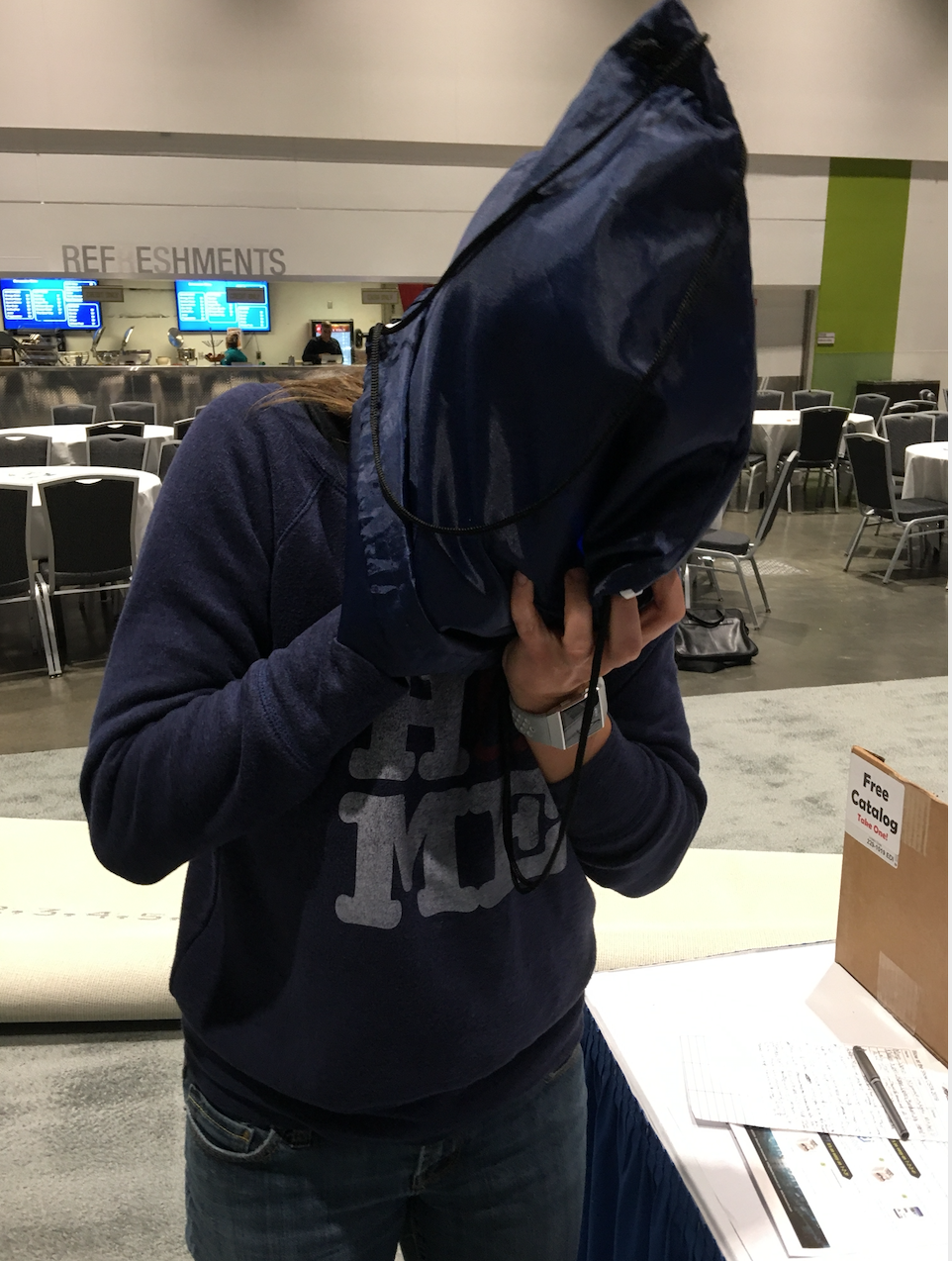
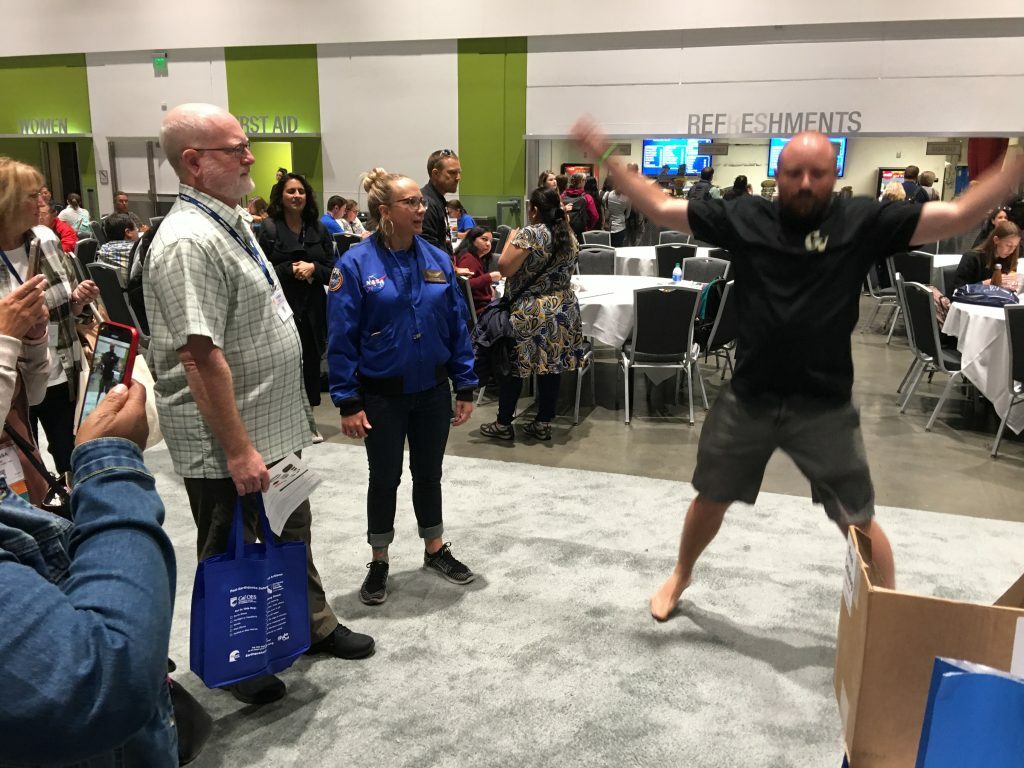
Science and Planning Prevail
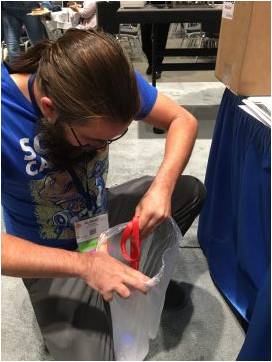
The best technical effort by far went to Albert, a teacher from a nearby private school who confirmed there was no rule that said he couldn’t come back the next day and compete. He came back the next morning with vinegar, baking soda, and a bag to capture the CO2 he produced. We lowered databot carefully into his cauldron. He maxed our sensor out at 60,000 PPM – an outstanding demonstration of science and problem solving! Albert’s class is going to have a lot of fun with databot in the coming school year. This is one outstanding teacher.
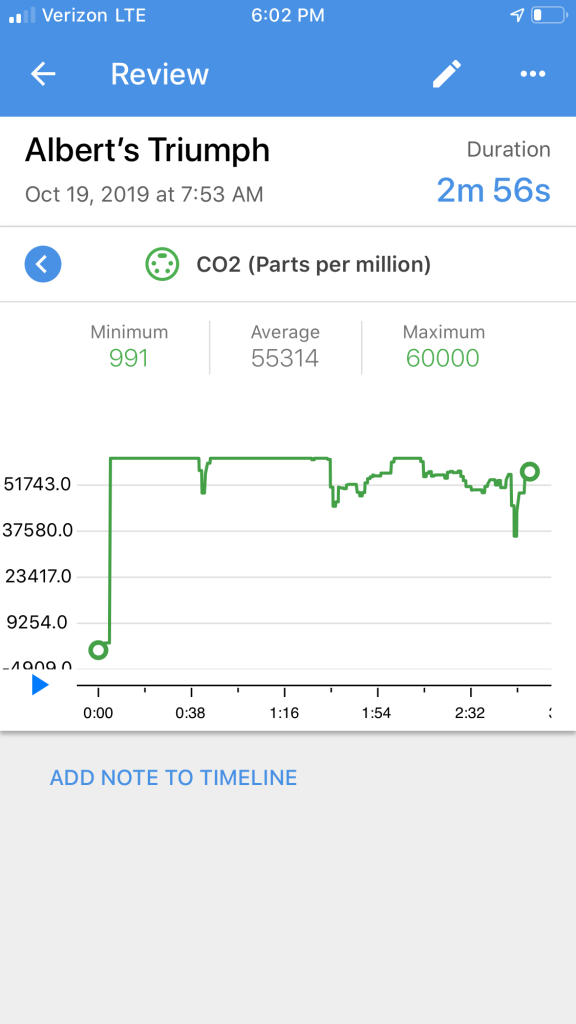
What Have We Learned from Playing Around?
What are some of the learning objectives that result from a gamified challenge like this one?
- A units of measure for gases is Parts Per Million (PPM).
- We exhale CO2.
- We can control how much CO2 we exhale if we understand how our body processes oxygen and produces CO2.
- CO2 is more dense than air; it settles.
- We have the ability to combine substances to create a new substance – in this case, CO2.
For more in-depth analysis, this experiment provides a good starting point for a number of additional investigations. The engagement generated by the gamification of a simple challenge can help drive those investigations.
We’re working on a new challenge for science teachers for an upcoming conference. We’ll let you know how it goes! If you have ideas for a great data game challenge using databot, please contact us and let us know. We’ll publish it for all to share and enjoy!
About the Author
Robert O. Grover is a proponent of STEAM education and educational technology that helps turn today’s students into tomorrow’s thoughtful leaders.

